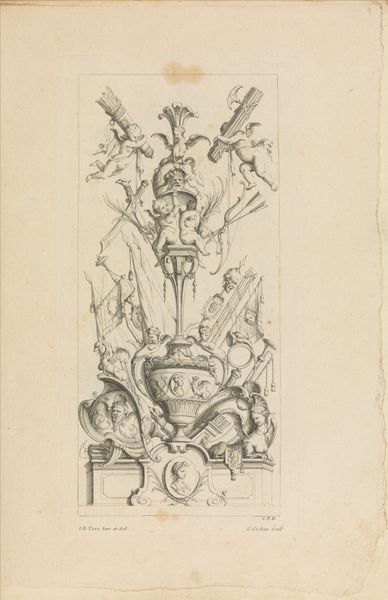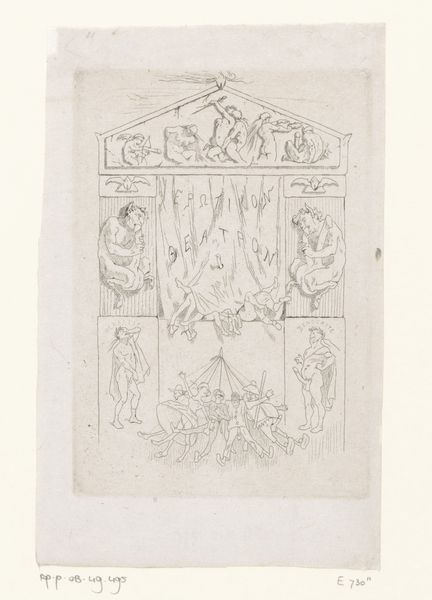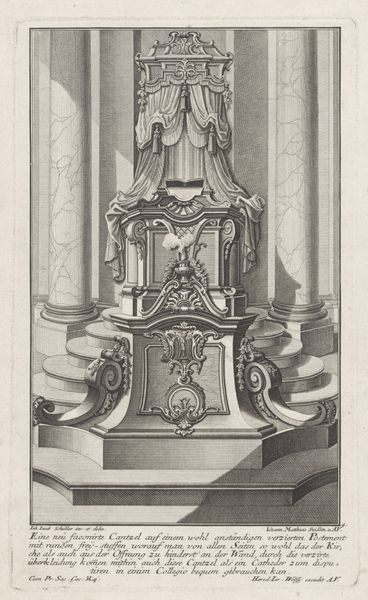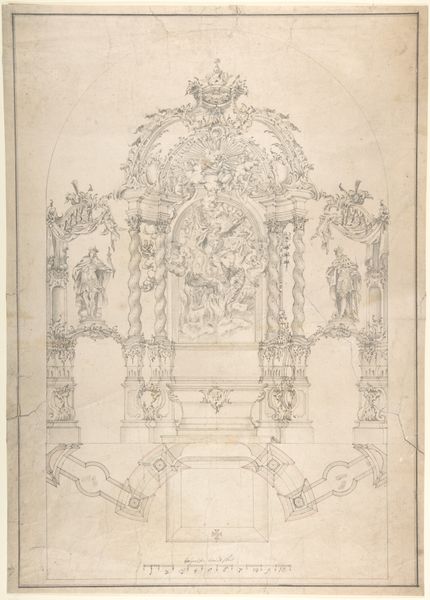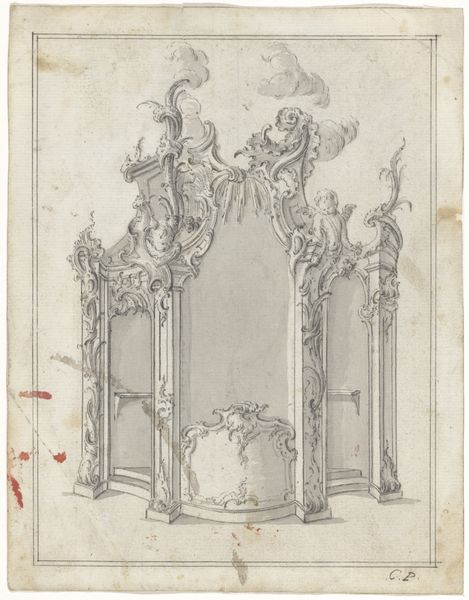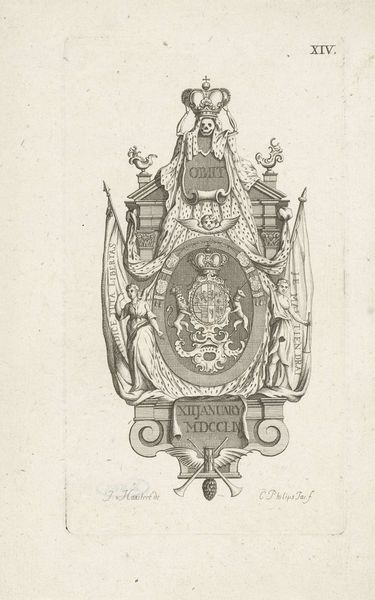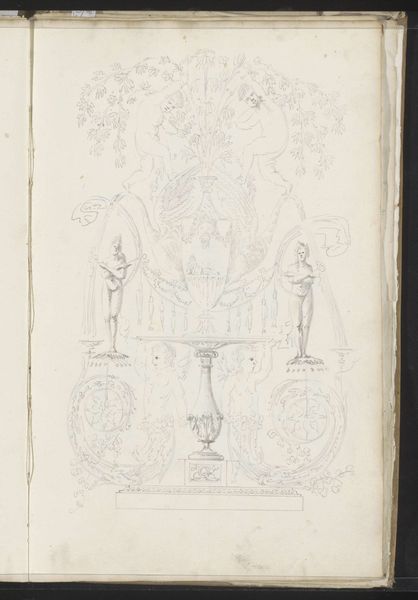
drawing, paper, ink
#
drawing
#
narrative-art
#
fantasy-art
#
figuration
#
paper
#
ink
#
symbolism
Dimensions: height 349 mm, width 276 mm
Copyright: Rijks Museum: Open Domain
Curator: Look at the staging—it reminds me of a theater. A spotlight on this musical trio… The work is titled "Luipaard, beer en wolf (Firapeel, Bruun en Isegrim)" or "Leopard, Bear and Wolf," created around 1910 by Bernard Willem Wierink, rendered in ink on paper. It’s part of the Rijksmuseum collection. Editor: My immediate response is one of eerie warmth. The sepia tones lend a vintage feel, and the figures are almost cartoonish, yet rendered with impressive anatomical accuracy. It makes you wonder, is the frame itself an inherent part of the overall structure? Curator: Absolutely. Wierink was a Dutch artist operating within the symbolist movement, so anthropomorphism wasn’t just whimsy but a deliberate vehicle to comment on human nature and societal hierarchies. Given that Wierink had the perspective of being part of the colonial structure, how did he want viewers to think about the natural world that colonialism threatened to "tame?" Editor: That is certainly one lens. Structurally speaking, there is so much at play: symmetry and asymmetry exist simultaneously. The upper register features almost art nouveau style radiating "branches" that converge on an arch, creating this tension above this gathering of animals in the center. It calls into question: Are they imprisoned, empowered, both, or neither? Curator: Right. Are the animals presented in this drawing just stand-ins? Metaphors for real-world figures who seek power through dominating, not destroying each other? The leopard's gaze exudes more calculated confidence than that of the burly, seemingly benign bear in the middle. Perhaps Wierink saw more than just beasts in them. Editor: The details surrounding the central figures also deserve scrutiny. Notice the ornamentation near the bottom, it shows what look like a wolf and ram's skull rendered in grisaille. This accentuates the narrative, placing them in this strange tableau… A morality play maybe? Curator: Perhaps it speaks to a narrative that is larger than Wierink himself. In an age of ever-accelerating species endangerment and environmental anxiety, "Leopard, Bear, and Wolf" feels both nostalgic and relevant. Wierink asks us to think more about how different groups coexist, dominate each other, and find themselves facing a blank rectangle in a colonial frame. Editor: It's a potent mix of skill and subtlety that invites ongoing interrogation.
Comments
No comments
Be the first to comment and join the conversation on the ultimate creative platform.

